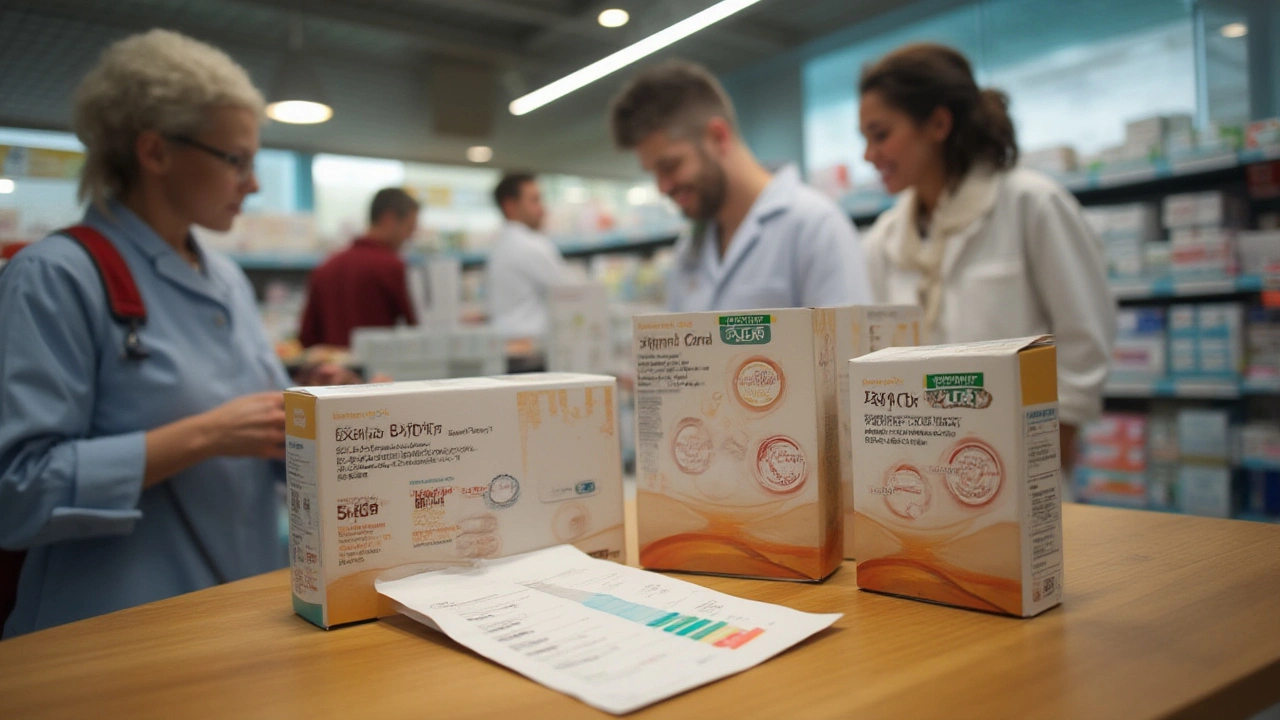Symbicort generic: what you need to know
If your doctor prescribed Symbicort, you might see cheaper options labeled as "generic." Symbicort is a combo of budesonide (a steroid) and formoterol (a fast-acting long bronchodilator). A generic will have the same active ingredients — budesonide and formoterol — but the inhaler device, propellant, or exact dosage strength might differ. That usually doesn't change how well the medicine works, but it can change how you use it day to day.
Generics can save money. Insurance plans often prefer generics and copays can be much lower. Ask your pharmacist to check for a generic budesonide/formoterol inhaler that matches the dose your doctor prescribed. If your plan lists a specific brand or generic on the formulary, that’s the one with the best price. Patient assistance programs, manufacturer coupons, and pharmacy discount cards can cut costs further.
What to watch for when switching
First, confirm the label names budesonide and formoterol and the same microgram strengths — commonly 80/4.5 or 160/4.5 per inhalation. Next, learn the new inhaler’s steps. Devices differ: some are press-and-breathe, others are dry-powder. Practice with a pharmacist or nurse so you get a full dose each time. If you rely on a spacer, check whether the new inhaler works with it. Also keep a rescue inhaler handy; budesonide/formoterol is for regular control and not for sudden severe attacks unless your doctor says otherwise.
Side effects are similar across brands. You may notice throat irritation, hoarseness, oral thrush, mild tremor, or a fast heartbeat. Rinse and spit after each use to lower the chance of thrush. If you see worsening breathing, new chest pain, or severe side effects, stop and call your doctor. If you have other conditions like high blood pressure, heart disease, or diabetes, mention them before switching.
Practical tips to make the switch smooth
Tell your healthcare team you’re switching so they can monitor symptoms and tweak doses if needed. Keep a symptom diary for two to four weeks — note wheeze, night wakings, rescue inhaler use, and exercise tolerance. Check insurance and ask about coupons or manufacturer savings programs. If the generic feels different or you lose control of symptoms after switching, don’t tough it out — contact your prescriber quickly. Sometimes device training or a brief dose adjustment fixes the issue.
Finding a safe online pharmacy? Use only licensed pharmacies that require a prescription. Avoid super-cheap offers with no contact info. Finally, remember that availability of generics differs by country. If you’re unsure whether a product is a true generic, your pharmacist can explain its approval status and equivalence to Symbicort.
Storage and stuff: store the inhaler at room temperature, away from heat and freezing. Check the expiry date and the dose counter if it has one — stop using when the counter hits zero. For children, pregnant or breastfeeding, always discuss a switch with the prescribing clinician. If cost stays a problem, ask about samples, patient assistance programs, or local clinics that can help with inhalers.
Symbicort Generics in 2025: What’s Approved and How to Get Them
Discover which Symbicort generics are FDA-approved in 2025, how to access them, and what sets each option apart for asthma and COPD management.

